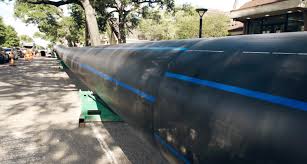Dec . 16, 2024 05:35 Back to list
hdpe pipe dimensions factories
Understanding HDPE Pipe Dimensions and Their Significance in Industry
High-Density Polyethylene (HDPE) pipes have rapidly become a preferred choice in various industries due to their durability, lightweight nature, and resistance to corrosion. Available in a variety of dimensions, HDPE pipes offer flexibility and efficiency for transporting liquids and gases in numerous applications. This article aims to explore HDPE pipe dimensions and the factors influencing their manufacture, along with the advantages they bring to industries worldwide.
Characteristics of HDPE Pipes
HDPE is a thermoplastic polymer made from petroleum. It possesses remarkable properties such as high tensile strength, low moisture absorption, and resistance to chemicals and UV radiation. These characteristics make HDPE ideal for applications in agriculture, water supply, drainage, and industrial sectors.
Standard HDPE Pipe Dimensions
HDPE pipes come in various sizes, with dimensions typically categorized by nominal pipe diameter (NPS) and the pipe's wall thickness. The most common sizes range from ½ inch to 60 inches in diameter. The dimension specifications are primarily governed by the American National Standards Institute (ANSI), the American Society for Testing and Materials (ASTM), and other international standards organizations that establish guidelines for pipe dimensions based on intended use.
- Nominal Diameter This refers to a standard reference that indicates the size of the pipe. For instance, a pipe with an NPS of 4 inches does not have an actual diameter of 4 inches, but rather it measures about 4.5 inches in external diameter. - Wall Thickness The wall thickness of HDPE pipes is vital as it affects the pipe's pressure rating. Thicker walls offer greater strength and can withstand higher pressures. Common thickness standards include SDR (Standard Dimension Ratio), which is the ratio of the pipe's diameter to its wall thickness. Lower SDR numbers indicate thicker walls and greater pressure capacity.
Factors Influencing Pipe Dimension Selection
1. Application Requirements The specific needs of the application dictate the pipe dimensions. For example, high-pressure applications require thicker walls, while gravity-driven systems may use thinner walls.
hdpe pipe dimensions factories

2. Fluid Characteristics The nature of the liquid or gas being transported can influence the choice of dimensions. For corrosive substances, a thicker pipe may provide the necessary protection.
3. Industry Standards Different industries have unique regulations and standards regarding pipeline construction and materials. Compliance with these standards is crucial to ensuring safety and functionality.
4. Installation Conditions Factors such as soil condition, temperature, and depth of burial affect the selection of pipe size. Proper sizing helps prevent issues related to expansion, contraction, and potential damage over time.
Advantages of HDPE Pipe Dimensions
Choosing the right dimensions for HDPE pipes offers several advantages
- Versatility The wide range of dimensions allows for customization, making HDPE pipes suitable for various applications, from residential water supply to large-scale industrial systems. - Cost-Efficiency With their lightweight properties, HDPE pipes reduce shipping and installation costs. They can be easily handled and installed, leading to lower labor expenses. - Longevity HDPE pipes have a longer lifespan compared to traditional materials like metal or concrete. Their resistance to corrosion and chemical damage prolongs their usability, often exceeding 50 years.
Conclusion
HDPE pipes are an integral part of modern infrastructure, providing critical solutions in water management, drainage, and industrial processes. Understanding the various dimensions of HDPE pipes and their implications for design and usage is essential for engineers and project managers. With numerous benefits, such as cost-effectiveness, durability, and flexibility, HDPE pipes continue to be a favored choice in projects across the globe. As industries increasingly seek sustainable and efficient solutions, the demand for HDPE pipes and their diverse dimensions is anticipated to grow, reinforcing their importance in our daily lives.
In summary, knowledge of HDPE pipe dimensions is vital for selecting the appropriate products for specific applications, ensuring both performance and compliance with industry standards. The future looks promising for HDPE technology, paving the way for innovative developments in plumbing, construction, and beyond.
-
High-Quality PVC Borehole Pipes Durable & Versatile Pipe Solutions
NewsJul.08,2025
-
High-Quality PVC Perforated Pipes for Efficient Drainage Leading Manufacturers & Factories
NewsJul.08,2025
-
High-Quality PVC Borehole Pipes Durable Pipe Solutions by Leading Manufacturer
NewsJul.08,2025
-
High-Quality PVC Borehole Pipes Reliable PVC Pipe Manufacturer Solutions
NewsJul.07,2025
-
High-Quality UPVC Drain Pipes Durable HDPE & Drain Pipe Solutions
NewsJul.07,2025
-
High-Quality Conduit Pipes & HDPE Conduit Fittings Manufacturer Reliable Factory Supply
NewsJul.06,2025

